To celebrate 5 years of iDigHardware, don’t forget to send me some photos in exchange for a chance to win a $50 Amazon gift card!
Last week I saw an egress situation that I have never seen before. The Rochester Opera House and City Hall first opened in Rochester, New Hampshire, in 1908. But in 1974, the opera house doors were closed due to the deterioration of the facility. In 1996, an effort began to renovate, revitalize, and reopen the opera house. Today it is beautiful, and hosts a variety of shows and other events regularly.
What’s really cool about the opera house is that the auditorium floor, approximately 57 feet x 41 feet, can be raised to accommodate angled auditorium seating, or lowered to a level floor for other types of events. It is thought to be the only surviving moving floor of this type in the United States.
Here is how the opera house looks with the floor in each position:
Of course I focused right in on the doors at the rear of the opera house. Two pairs in the center serve the occupant load when the floor is in the level position. A pair in each corner of the rear wall provide egress when the floor is in the raised position. There are exit signs over all 4 doors, but two of the signs are covered depending on the position of the floor.
Here is the lobby side of the rear doors – the two on the left are used when the floor is level; the pair to the left at the top of the stairs are used when the floor is in the raised position (there is a similar pair on the other end).
The center (lower) doors on the inside (the floor is raised):
With those doors open you can see under the floor:
Here’s one of the upper pairs:
These are not typical pairs – they’re more like bifolds (and you’re right – they’re supposed to have panic hardware):
One of the exit signs:
The auditorium seating can be removed in groups of 3 or 4 seats – the brass turn attaches the seats to the floor:
There is TONS of information about the opera house’s history and the moving floor on the Rochester Opera House website. There’s even a video! Enjoy!
You need to login or register to bookmark/favorite this content.

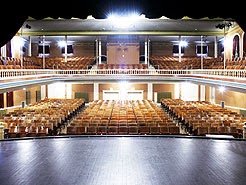

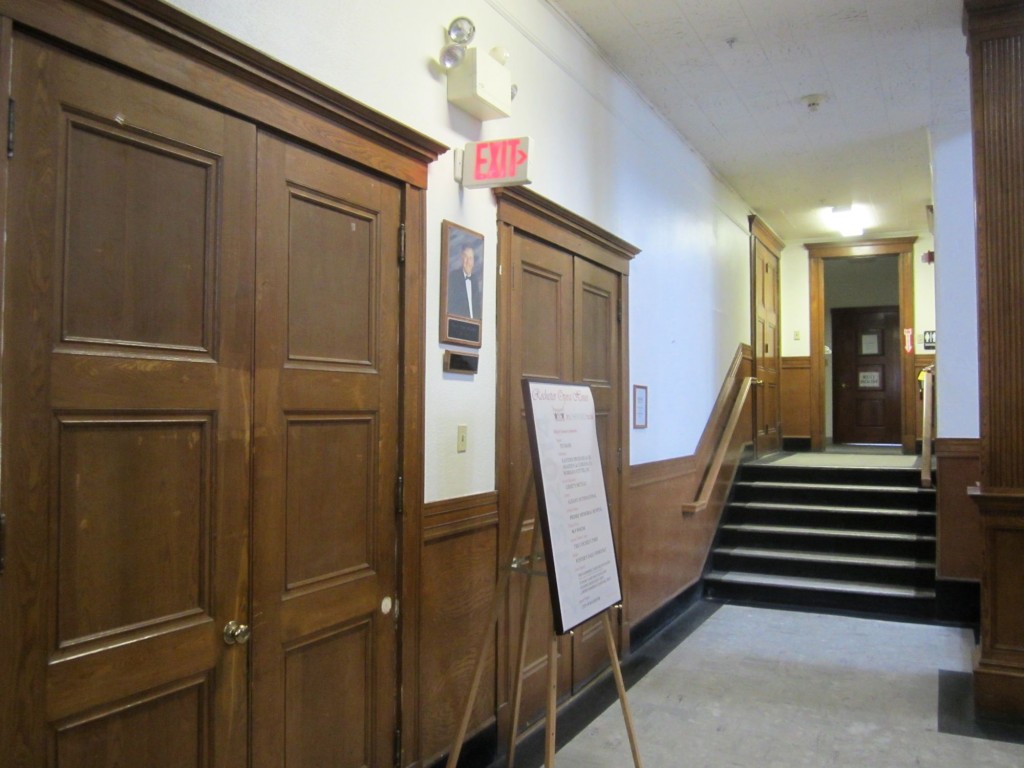
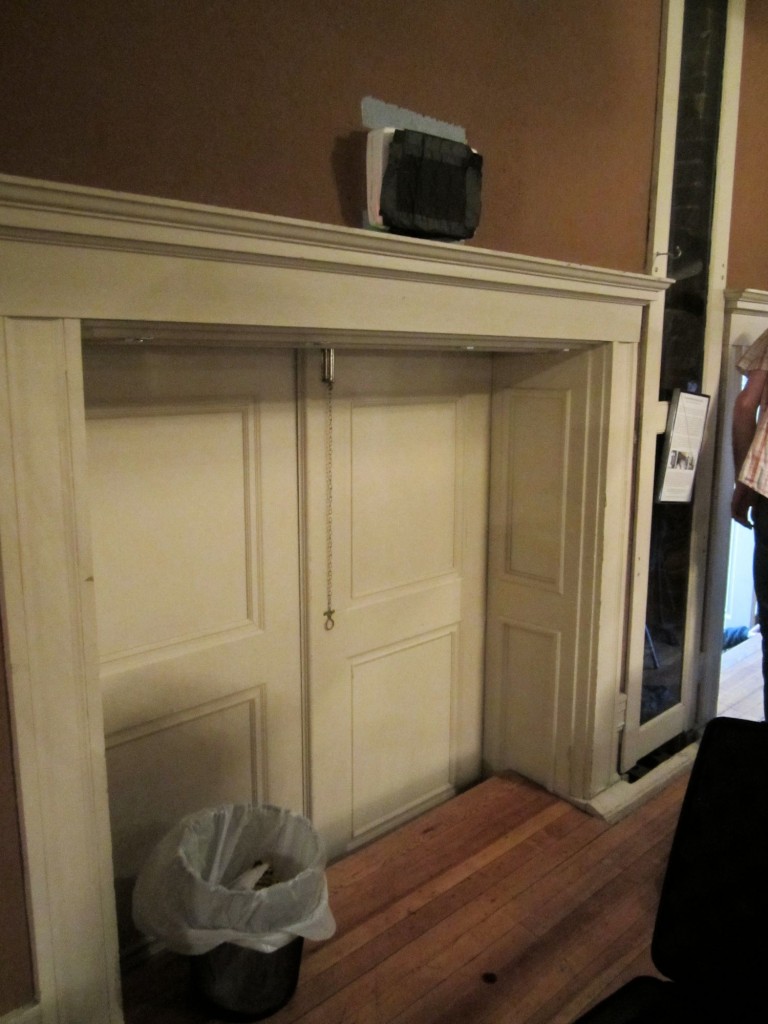
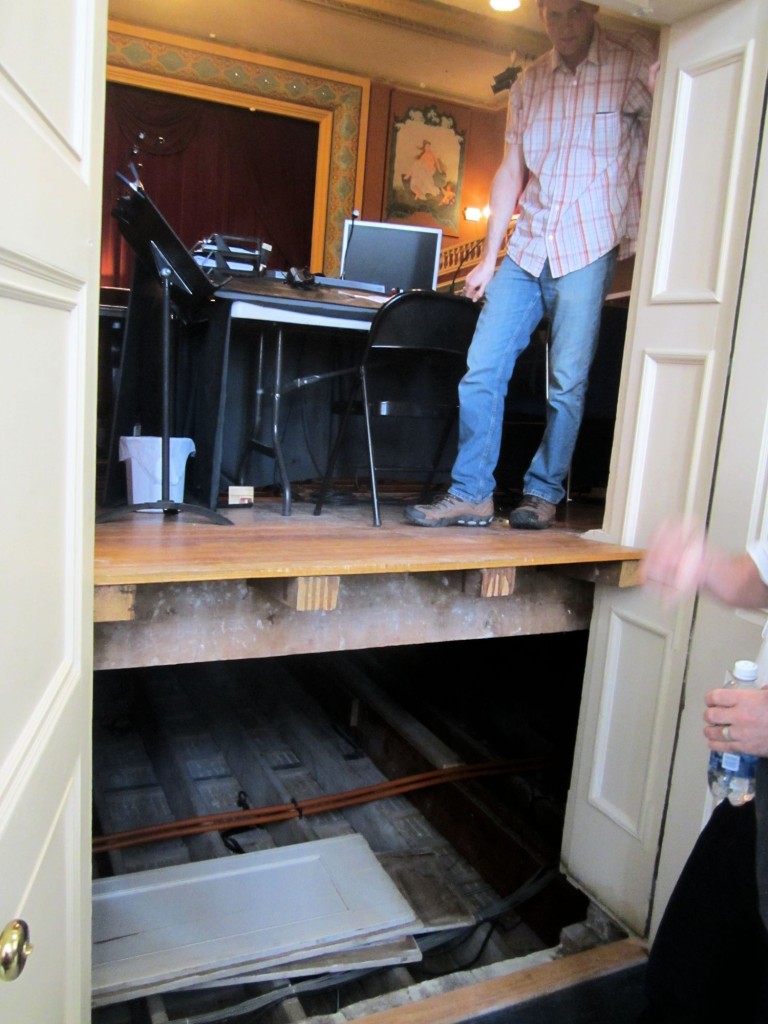
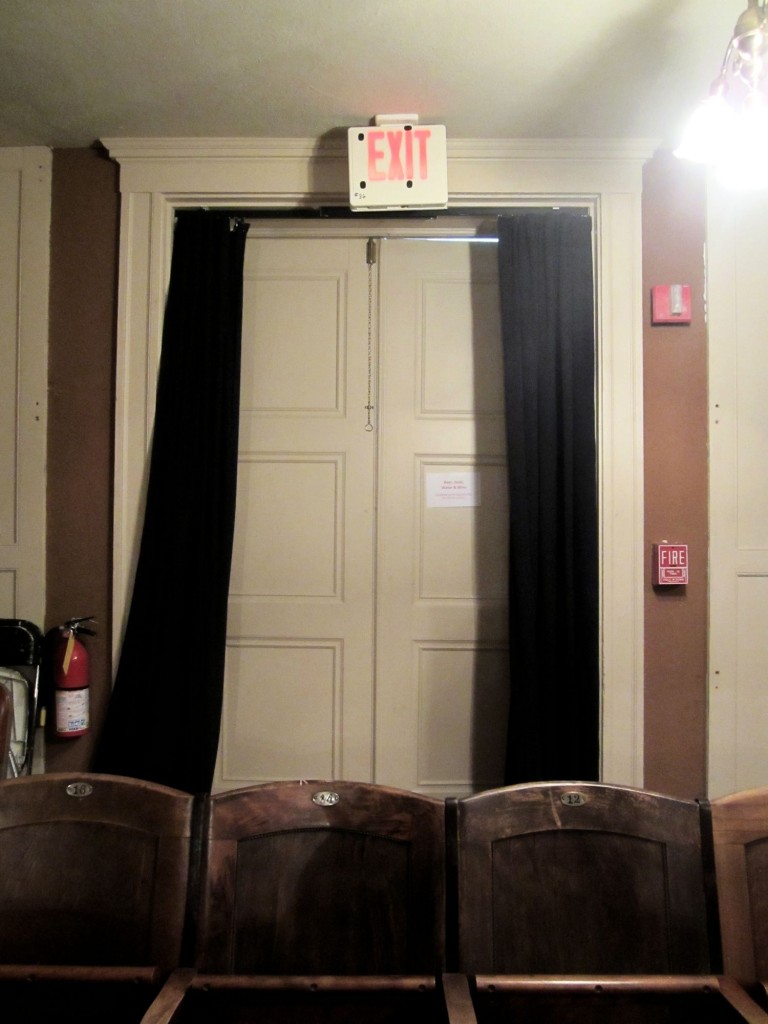
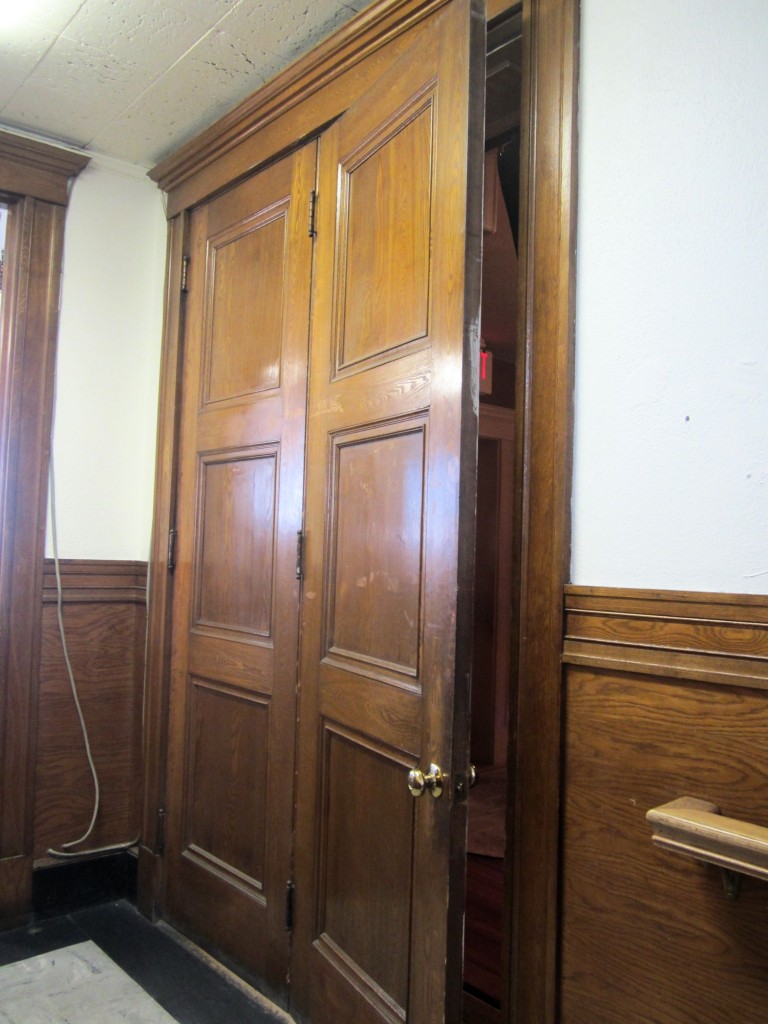


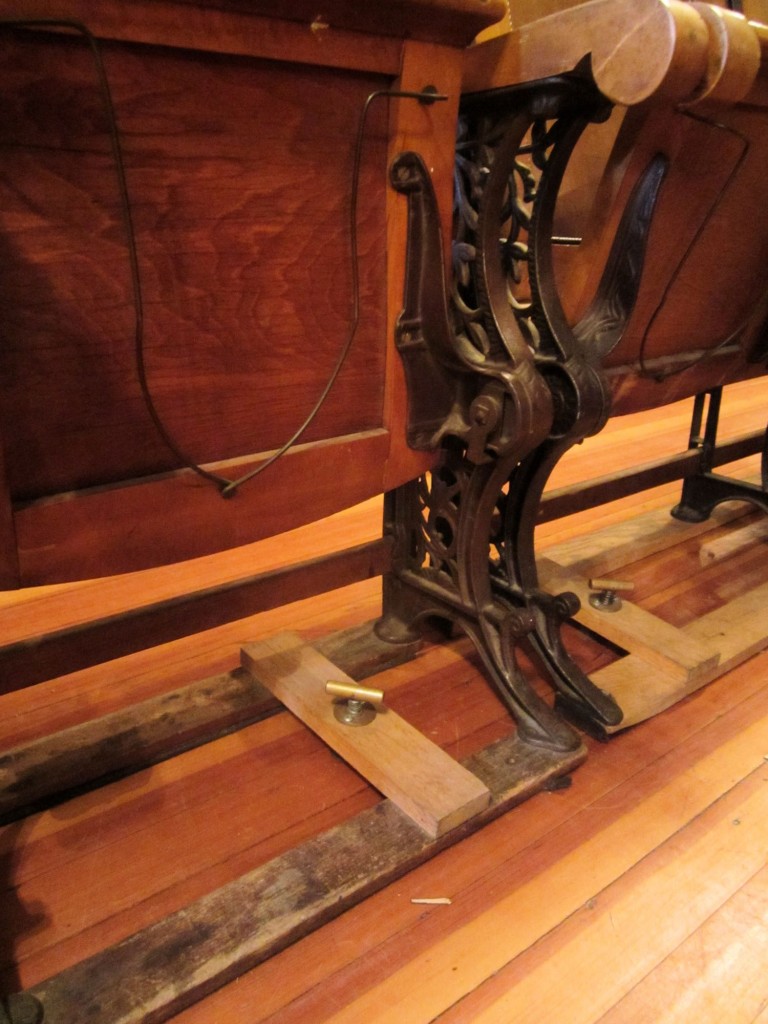


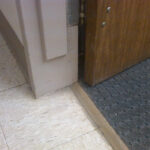
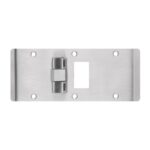
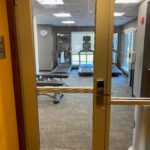
I hate to say I never knew this even existed even though my mother-in-law lives in Rochester. Going to have to go see a show here sometime now. That movable floor is an amazing thing!
I know! I didn’t even know this kind of floor existed!
Fascinating! Definitely worth the price of admission to your site! Congratulations on your fifth anniversary, Lori. I did have to revisit your post on elevator lobbies. Keep up the excellent work.
Thanks Clair!